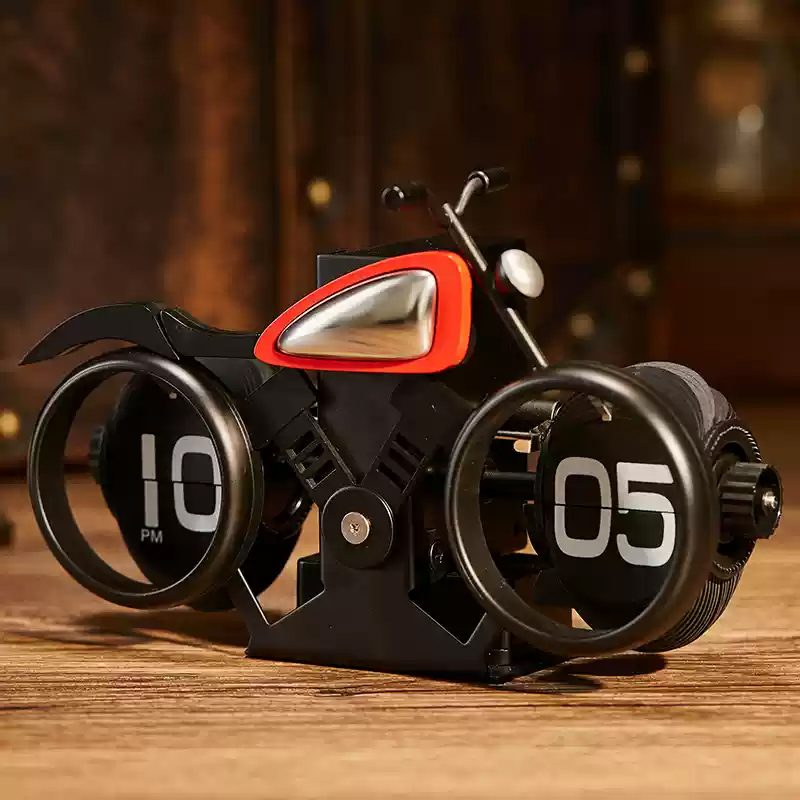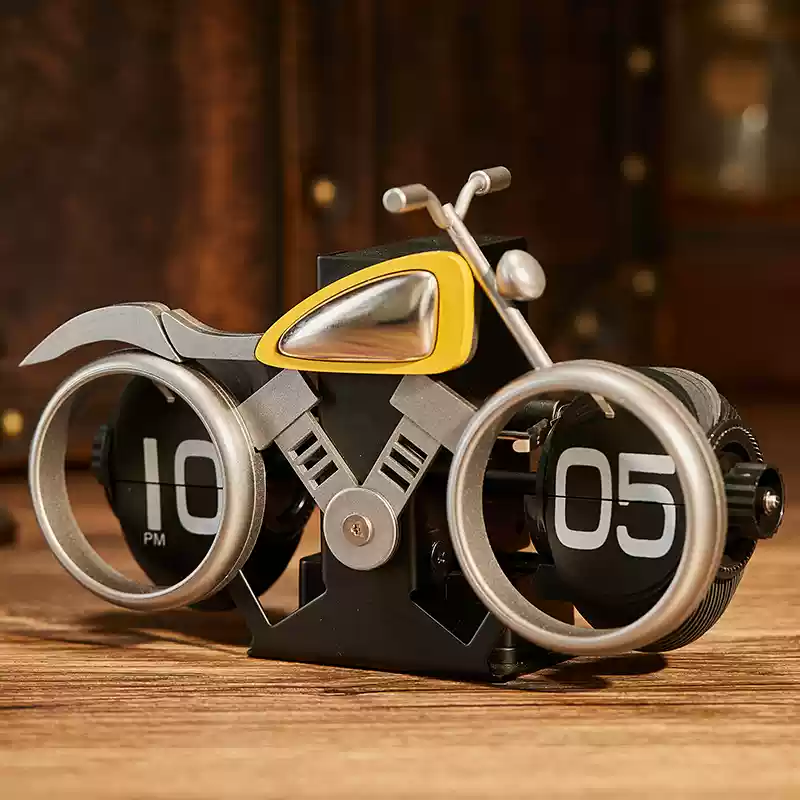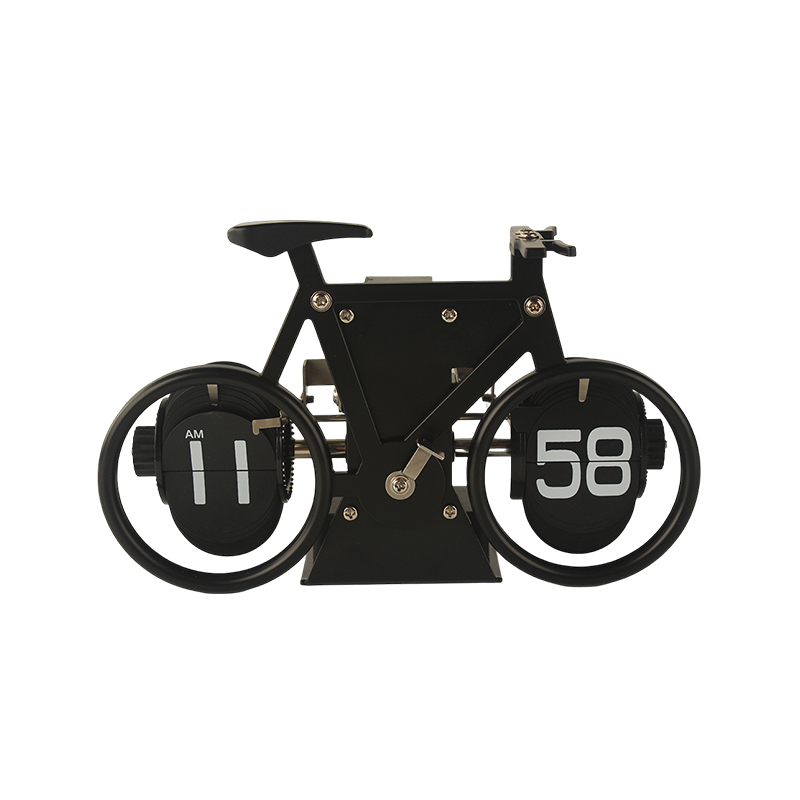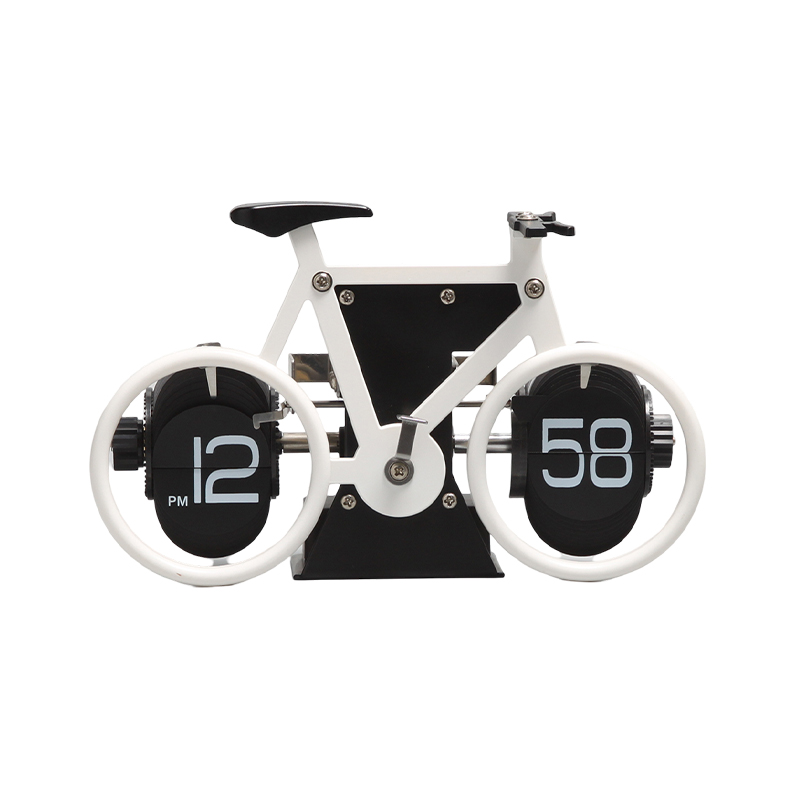How do mechanical gear clocks achieve precise timekeeping through purely physical transmission?
Release Time : 2025-08-20
1. The Mechanical Beauty of Time
Even in today's highly developed world of electronic and intelligent timekeeping devices, mechanical gear clocks continue to captivate people with their unique charm. They rely not on batteries, chips, or network signals, but solely on the precise coordination of physical components—springs, gears, balance wheels, and weights—to reliably and elegantly indicate time. This timekeeping method, based entirely on physical transmission, not only demonstrates humanity's profound understanding of the laws of time but also embodies the ultimate in mechanical engineering. So, how do mechanical gear clocks achieve precise timekeeping through purely physical structures?
2. Power Source: Energy Storage and Release
The lifeblood of a mechanical gear clock is its power system. Traditional mechanical clocks typically use two power sources: a spring or a weight. The process of winding the spring or raising the weight actually converts human work into potential energy or elastic potential energy, which is then stored. When the clock is started, this stored energy is slowly released through the mainspring barrel, driving a series of gears. This process doesn't happen overnight; rather, it's a sophisticated transmission system that gradually distributes energy at an extremely slow rate, ensuring smooth operation for hours or even days.
3. Transmission System: The Precision of Gears
The heart of a mechanical gear clock is the gear transmission system. It consists of multiple gears of varying sizes and precise tooth counts, forming a "reduction chain." The energy released by the mainspring first drives the largest drive wheel (such as the main wheel), which is then transmitted to the intermediate wheel, the hour wheel, the minute wheel, and so on. The gear ratios of these gears are precisely calculated to ensure proportional reductions in speed at each stage. For example, the minute hand rotates once every 60 minutes, while the hour hand rotates once every 12 hours, requiring a 12:1 transmission ratio. Through multiple stages of gear reduction, the high initial speed is converted into slow and steady hand movement, thereby ensuring accurate time indication.
4. Regulating Mechanism: The Escapement's "Metronome" Function
If the gear system is the "blood vessels that transmit power," then the escapement is the "heart" and "metronome" of the mechanical clock. It consists of an escape wheel, a pallet fork, and a regulating element (such as a balance spring or pendulum) and is crucial for achieving precise timekeeping. As the gear system attempts to advance the escape wheel, the pallet fork periodically "locks" and "releases" the escape wheel's teeth, preventing it from advancing step by step. Each release corresponds to an oscillation—whether it's the back-and-forth rotation of the balance wheel or the left-right swing of the pendulum. This periodic oscillation frequency (for example, once per second or once every two seconds) determines the timekeeping standard of the clock.
5. Regulating Element: A Perfect Application of the Laws of Physics
The regulating element of a mechanical clock utilizes basic physical laws. Small mechanical clocks often use a balance spring system, relying on the elastic restoring force of the hairspring and the inertia of the balance wheel to produce isochronous oscillations. These regulating elements are "isochronous"—meaning that their oscillation period remains virtually constant within a certain range. It is this stability that enables mechanical clocks to maintain high timekeeping accuracy without electronic components. Although affected by factors such as temperature, position, and wear, modern mechanical clocks can now maintain daily error within a few seconds through compensating devices (such as bimetallic balance wheels and temperature-compensating hairsprings).
6. Error Control and Precision Calibration
Despite their purely mechanical construction, high-end mechanical gear clocks possess error control capabilities. Watchmakers can finely calibrate the speed of the time by fine-tuning the pendulum length, hairspring length, or escapement force. Furthermore, complex devices such as constant-force mechanisms and tourbillons are used to counteract the effects of gravity, friction, and power fluctuations, further enhancing accuracy.
Mechanical gear clocks are not merely timekeeping instruments; they are masterpieces of the perfect fusion of human ingenuity and the laws of physics. Using pure mechanical transmission, they integrate energy, motion, and the laws of time, achieving precise timekeeping without the need for electricity. From spring energy storage to gear transmission, from escapement control to swing speed regulation, every step reflects a profound understanding of mechanical principles and the ultimate pursuit of precision engineering.
Even in today's highly developed world of electronic and intelligent timekeeping devices, mechanical gear clocks continue to captivate people with their unique charm. They rely not on batteries, chips, or network signals, but solely on the precise coordination of physical components—springs, gears, balance wheels, and weights—to reliably and elegantly indicate time. This timekeeping method, based entirely on physical transmission, not only demonstrates humanity's profound understanding of the laws of time but also embodies the ultimate in mechanical engineering. So, how do mechanical gear clocks achieve precise timekeeping through purely physical structures?
2. Power Source: Energy Storage and Release
The lifeblood of a mechanical gear clock is its power system. Traditional mechanical clocks typically use two power sources: a spring or a weight. The process of winding the spring or raising the weight actually converts human work into potential energy or elastic potential energy, which is then stored. When the clock is started, this stored energy is slowly released through the mainspring barrel, driving a series of gears. This process doesn't happen overnight; rather, it's a sophisticated transmission system that gradually distributes energy at an extremely slow rate, ensuring smooth operation for hours or even days.
3. Transmission System: The Precision of Gears
The heart of a mechanical gear clock is the gear transmission system. It consists of multiple gears of varying sizes and precise tooth counts, forming a "reduction chain." The energy released by the mainspring first drives the largest drive wheel (such as the main wheel), which is then transmitted to the intermediate wheel, the hour wheel, the minute wheel, and so on. The gear ratios of these gears are precisely calculated to ensure proportional reductions in speed at each stage. For example, the minute hand rotates once every 60 minutes, while the hour hand rotates once every 12 hours, requiring a 12:1 transmission ratio. Through multiple stages of gear reduction, the high initial speed is converted into slow and steady hand movement, thereby ensuring accurate time indication.
4. Regulating Mechanism: The Escapement's "Metronome" Function
If the gear system is the "blood vessels that transmit power," then the escapement is the "heart" and "metronome" of the mechanical clock. It consists of an escape wheel, a pallet fork, and a regulating element (such as a balance spring or pendulum) and is crucial for achieving precise timekeeping. As the gear system attempts to advance the escape wheel, the pallet fork periodically "locks" and "releases" the escape wheel's teeth, preventing it from advancing step by step. Each release corresponds to an oscillation—whether it's the back-and-forth rotation of the balance wheel or the left-right swing of the pendulum. This periodic oscillation frequency (for example, once per second or once every two seconds) determines the timekeeping standard of the clock.
5. Regulating Element: A Perfect Application of the Laws of Physics
The regulating element of a mechanical clock utilizes basic physical laws. Small mechanical clocks often use a balance spring system, relying on the elastic restoring force of the hairspring and the inertia of the balance wheel to produce isochronous oscillations. These regulating elements are "isochronous"—meaning that their oscillation period remains virtually constant within a certain range. It is this stability that enables mechanical clocks to maintain high timekeeping accuracy without electronic components. Although affected by factors such as temperature, position, and wear, modern mechanical clocks can now maintain daily error within a few seconds through compensating devices (such as bimetallic balance wheels and temperature-compensating hairsprings).
6. Error Control and Precision Calibration
Despite their purely mechanical construction, high-end mechanical gear clocks possess error control capabilities. Watchmakers can finely calibrate the speed of the time by fine-tuning the pendulum length, hairspring length, or escapement force. Furthermore, complex devices such as constant-force mechanisms and tourbillons are used to counteract the effects of gravity, friction, and power fluctuations, further enhancing accuracy.
Mechanical gear clocks are not merely timekeeping instruments; they are masterpieces of the perfect fusion of human ingenuity and the laws of physics. Using pure mechanical transmission, they integrate energy, motion, and the laws of time, achieving precise timekeeping without the need for electricity. From spring energy storage to gear transmission, from escapement control to swing speed regulation, every step reflects a profound understanding of mechanical principles and the ultimate pursuit of precision engineering.







